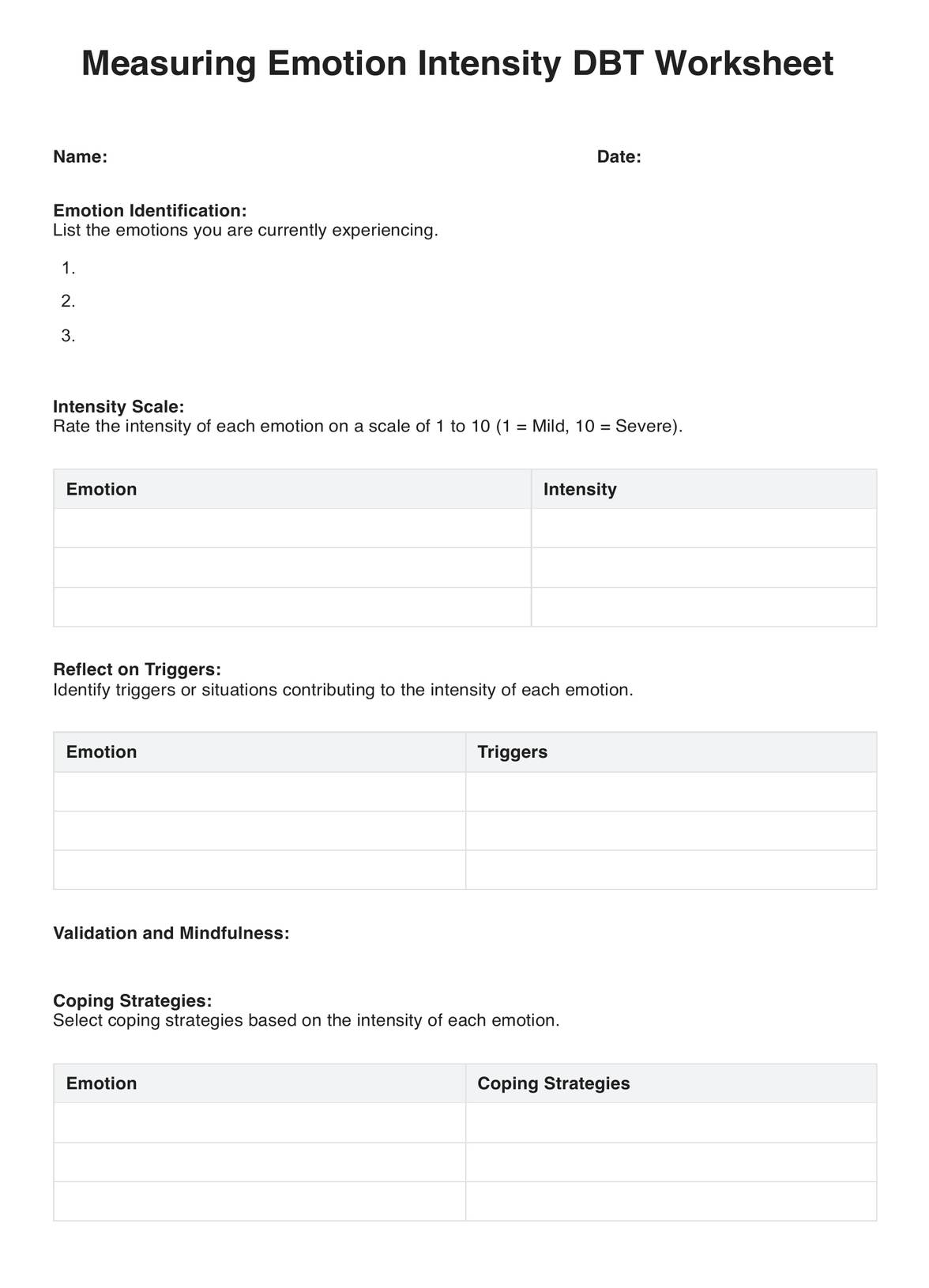The time required to complete the worksheet varies depending on the individual's familiarity with the process and the depth of reflection. On average, it may take around 15-30 minutes to thoroughly engage with the assessment.

Measuring Emotion Intensity DBT Worksheet
Enhance emotional awareness and regulation with the Measuring Emotion Intensity DBT Worksheet—a valuable tool for effective emotion management.
Measuring Emotion Intensity DBT Worksheet Template
Commonly asked questions
The worksheet aids individuals in understanding, assessing, and managing their emotions more effectively. It provides a structured framework to gauge emotion intensity, identify triggers, choose appropriate coping strategies, and enhance emotional regulation skills.
The worksheet is beneficial during moments of heightened emotion, therapy sessions, personal reflection, crisis management, and as a regular practice for emotional well-being.
EHR and practice management software
Get started for free
*No credit card required
Free
$0/usd
Unlimited clients
Telehealth
1GB of storage
Client portal text
Automated billing and online payments











